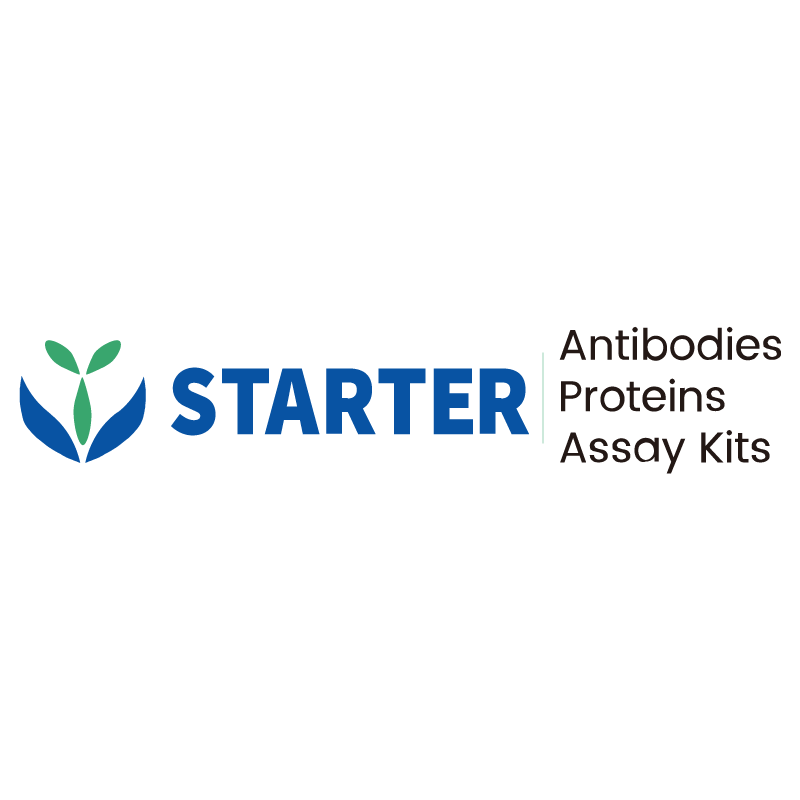WB result of IDO1/Indoleamine 2,3-dioxygenase Rabbit mAb
Primary antibody: IDO1/Indoleamine 2,3-dioxygenase Rabbit mAb at 1/1000 dilution
Lane 1: HeLa whole cell lysate 20 µg
Lane 2: HeLa treated with IFN-γ (50ng/ml,16 hr) whole cell lysate 20 µg
Secondary antibody: Goat Anti-Rabbit IgG, (H+L), HRP conjugated at 1/10000 dilution
Predicted MW: 45 kDa
Observed MW: 40 kDa
Product Details
Product Details
Product Specification
| Host | Rabbit |
| Antigen | IDO1/Indoleamine 2,3-dioxygenase |
| Synonyms | Indoleamine-pyrrole 2,3-dioxygenase, IDO, INDO |
| Immunogen | Recombinant Protein |
| Location | Cytoplasm |
| Accession | P14902 |
| Clone Number | S-259-62 |
| Antibody Type | Recombinant mAb |
| Application | WB, ICC, ICFCM, IHC |
| Reactivity | Hu |
| Purification | Protein A |
| Concentration | 0.1 mg/ml |
| Conjugation | Unconjugated |
| Physical Appearance | Liquid |
| Storage Buffer | PBS, 40% Glycerol, 0.05%BSA, 0.03% Proclin 300 |
| Stability & Storage | 12 months from date of receipt / reconstitution, -20 °C as supplied |
Dilution
| application | dilution | species |
| WB | 1:1000 | null |
| IHC | 1:200-1:1000 | null |
| ICC | 1:100 | null |
| ICFCM | 1:100 | null |
Background
Indoleamine-pyrrole 2,3-dioxygenase (IDO or INDO) is a heme-containing enzyme physiologically expressed in a number of tissues and cells, such as the small intestine, lungs, female genital tract or placenta. IDO is an important part of the immune system and plays a part in natural defense against various pathogens. It is produced by the cells in response to inflammation and has an immunosuppressive function because of its ability to limit T-cell function and engage mechanisms of immune tolerance. Emerging evidence suggests that IDO becomes activated during tumor development, helping malignant cells escape eradication by the immune system. Expression of IDO has been described in a number of types of cancer, such as acute myeloid leukemia, ovarian cancer or colorectal cancer.
Picture
Picture
Western Blot
WB result of IDO1/Indoleamine 2,3-dioxygenase Rabbit mAb
Primary antibody: IDO1/Indoleamine 2,3-dioxygenase Rabbit mAb at 1/1000 dilution
Lane 1: SK-OV-3 whole cell lysate 20 µg
Secondary antibody: Goat Anti-Rabbit IgG, (H+L), HRP conjugated at 1/10000 dilution
Predicted MW: 45 kDa
Observed MW: 40 kDa
FC
Flow cytometric analysis of 4% PFA fixed 90% methanol permeabilized HeLa (Human cervix adenocarcinoma epithelial cell) cells, treated with IFN-γ (50 ng/ml, 16 hr) (Red) or untreated (Green), labeling IDO1/Indoleamine 2, 3-dioxygenase at 1/100 dilution (0.1 μg) compared with a rabbit monoclonal IgG isotype control (black) and an unlabeled control (cells without incubation with primary antibody and secondary antibody) (Blue). Goat Anti - Rabbit IgG Alexa Fluor® 488 was used as the secondary antibody.
Immunohistochemistry
IHC shows positive staining in paraffin-embedded human placenta. Anti-IDO1/Indoleamine 2,3-dioxygenase antibody was used at 1/200 dilution, followed by a HRP Polymer for Mouse & Rabbit IgG (ready to use). Counterstained with hematoxylin. Heat mediated antigen retrieval with Tris/EDTA buffer pH9.0 was performed before commencing with IHC staining protocol.
IHC shows positive staining in paraffin-embedded human tonsil. Anti-IDO1/Indoleamine 2,3-dioxygenase antibody was used at 1/200 dilution, followed by a HRP Polymer for Mouse & Rabbit IgG (ready to use). Counterstained with hematoxylin. Heat mediated antigen retrieval with Tris/EDTA buffer pH9.0 was performed before commencing with IHC staining protocol.
IHC shows positive staining in paraffin-embedded human spleen. Anti-IDO1/Indoleamine 2,3-dioxygenase antibody was used at 1/200 dilution, followed by a HRP Polymer for Mouse & Rabbit IgG (ready to use). Counterstained with hematoxylin. Heat mediated antigen retrieval with Tris/EDTA buffer pH9.0 was performed before commencing with IHC staining protocol.
IHC shows positive staining in paraffin-embedded human Hodgkin’s lymphoma. Anti-IDO1/Indoleamine 2,3-dioxygenase antibody was used at 1/200 dilution, followed by a HRP Polymer for Mouse & Rabbit IgG (ready to use). Counterstained with hematoxylin. Heat mediated antigen retrieval with Tris/EDTA buffer pH9.0 was performed before commencing with IHC staining protocol.
IHC shows positive staining in paraffin-embedded human endometrial carcinoma. Anti-IDO1/Indoleamine 2,3-dioxygenase antibody was used at 1/200 dilution, followed by a HRP Polymer for Mouse & Rabbit IgG (ready to use). Counterstained with hematoxylin. Heat mediated antigen retrieval with Tris/EDTA buffer pH9.0 was performed before commencing with IHC staining protocol.
Immunocytochemistry
ICC shows positive staining in HeLa cells, treated with IFN-γ (50 ng/ml, 16 hr). Anti-IDO/Indoleamine 2,3-dioxygenase Rabbit antibody was used at 1/100 dilution (Green) and incubated overnight at 4°C. Goat polyclonal Antibody to Rabbit IgG - H&L (Alexa Fluor® 488) was used as secondary antibody at 1/1000 dilution. The cells were fixed with 4% PFA and permeabilized with 0.1% PBS-Triton X-100. Nuclei were counterstained with DAPI (Blue). Counterstain with tubulin (red).
Negative control: ICC shows negative staining in HeLa cells, untreated with IFN-γ (50 ng/ml, 16 hr). Anti- IDO/Indoleamine 2,3-dioxygenase Rabbit antibody was used at 1/100 dilution and incubated overnight at 4°C. Goat polyclonal Antibody to Rabbit IgG - H&L (Alexa Fluor® 488) was used as secondary antibody at 1/1000 dilution. The cells were fixed with 4% PFA and permeabilized with 0.1% PBS-Triton X-100. Nuclei were counterstained with DAPI (Blue). Counterstain with tubulin (red).


